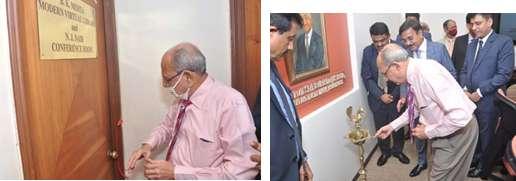32
PROCESSING FOCUS
CAUSTIC CIRCULARITY-A GAME CHANGER FOR THE TEXTILE INDUSTRY MR. VINAY PATIL Managing Director, S.A. Pharmachem, Pvt.Ltd. Caustic circularity is not only environmentally beneficial; it will also improve the textile industry’s competitiveness. Caustic circularity can be a game changer for the industry!
Application of caustic soda in Textile Industry and its Impact on fabric • Mercerization of Cotton Fabric Enhanced dye affinity Improved fibre strength Enhanced air permeability Better Lustre
ing sizing, and gives proper whiteness to product, and makes it highly absorbent for next process. Recent Trends in Textile Processing • Spent caustic is rarely recycled in majority of the textile processing facilities due to the heavy impurities / contaminants. • Spent caustic (wash liquor) is usually sent to the mill wastewater treatment plant or sold outside agencies at nominal price. This can be used either to generate NaOCl or purified and concentrated for recycle.
• Scouring & Bleaching of Fabric Removes impurities (natural & added) such as oils, fats, waxes, proteins, and pectin. Removes added impurities dur-
• Operating cost (steam, power and scaling -down) of conventional CRP is very high.
Enhanced shrinkage resistance
• Dissolved chemicals / sizing chemicals (during mercerizing of material at Grieg / half bleached stage) • Dyestuff (while dyed material is mercrized) • Cotton lint • Pectin • Oils, Fats & Waxes • Hemi-cellulose • Gassing dust from singed fabric
• In general, when wash liquor is sent to ETP, it has higher pH which is neutralized by hydrochloric or sulphuric acid, resulting in increased cost of operation and TDS of effluent being discharged after treatment. • When spent caustic is sent to conventional CRP, plant technicians are not willing to reuse for processing of costly raw material due to impurities present in recovered caustic.
Enhanced colour fastness
Impurities Present in Spent Caustic
• Metals from machines and pipelines • Various metals from machines and pipelines In short, recycling of caustic is not appreciated for quality product because of: 1) Quality of recycled caustic 2) Cost of recycling and treatment at ETP 3) Adverse impact on end product In order to resolve this issue, S.A. Pharmachem’s technical team has taken several trials and ultimately developed a full proof process for recycling of caustic. This new development is known as “Caustic Purification System”. Caustic Purification System (CPS) Caustic purification system is designed
OCTOBER 2021



















